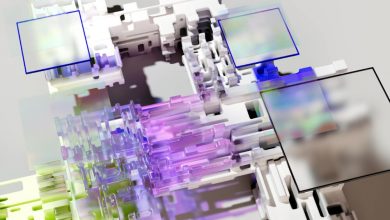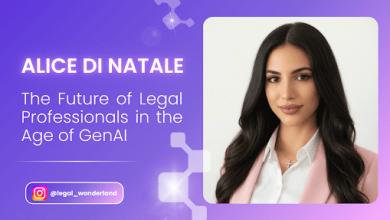The Rise of AI Tools Since GPT: A New Era in Images, Text, and Education

The advent of GPT models has ushered in a new era of artificial intelligence tools across various fields. In the few years since advanced GPT models like GPT-3 and GPT-4 became available, AI-powered applications have rapidly become common in creative arts, content analysis, and education.
This article explores how AI tools have proliferated in three key domains – image creation, content analysis, and education – backed by data on growth trends, adoption rates, and popular tools in each area. We highlight notable examples such as DALL·E, Midjourney, Grammarly, GPT-based summarizers, and AI-driven learning tools like Quizlet’s Q-Chat, illustrating the transformative impact of AI on work and learning.
For those seeking hands-on experience, Neuralstock.ai offers lots of free AI-powered tools that showcase the real-world utility of modern generative technologies.
AI Image Creation Goes Mainstream
Not long ago, the idea of typing a description and having an AI generate a realistic image sounded like science fiction. Today, AI image generators are widely used by artists, designers, and casual users alike.
Since the release of models like OpenAI’s DALL·E 2 in 2022, the volume of AI-created imagery has exploded. People have been creating an estimated 34 million AI-generated images per day on average. By late 2023, the cumulative number of images produced by generative AI models had surpassed 15 billion – a staggering figure that took human photographers nearly two centuries to achieve in traditional photography.
Two of the most popular tools leading this wave are DALL·E and Midjourney. OpenAI reported over 2 million images per day were generated with DALL·E 2 soon after its release. Midjourney, launched in mid-2022, grew rapidly to reach over 19 million registered users on its Discord server by early 2024, with 1.2–2.5 million people generating images daily.
A 2023 survey of digital artists found that DALL·E 2 was the most preferred AI art tool (28.3%), closely followed by Midjourney (27.1%).
The open-source movement, particularly Stable Diffusion by Stability AI (released August 2022), also played a major role. By 2023, Stable Diffusion had over 10 million users, powering an estimated 80% of all AI-generated images to date.
The top five image platforms – Midjourney, DALL·E, NightCafe, StarryAI, and Stable Diffusion – now comprise nearly the entire generative image market. The result: AI image creation has gone from niche to mainstream.
AI for Content Analysis and Writing Assistance
Beyond images, AI has transformed how we write, edit, and analyze text. At the center of this revolution is GPT, particularly ChatGPT, which launched in late 2022 and brought advanced writing capabilities to millions.
ChatGPT became the fastest-growing consumer application in history, reaching 100 million monthly users in just two months. As of mid-2025, it’s used by an estimated 122 million people daily, handling over 1 billion queries each day.
One standout writing assistant is Grammarly, which checks grammar, clarity, and tone. Its user base has soared from 1 million daily users in 2015 to over 30 million today. Over 50,000 organizations, including most Fortune 500 companies, rely on it.
Bloggers using AI tools now spend about 30% less time writing posts, while business teams report large productivity gains.
GPT-based summarizers have also surged. Among companies using generative AI, 58% use it for writing or summarization, making content tasks the top use-case. Tools like Microsoft’s Copilot, which summarizes meetings and drafts emails, show how integrated GPT is becoming.
Even journalism has seen AI involvement. The Washington Post used an internal AI writer to produce 800+ articles during the 2016 Rio Olympics.
Since GPT-3 showcased human-like writing in 2020, platforms like Jasper, Copy.ai, and Notion AI have emerged. By 2024, 48% of businesses used some form of AI – and text tools were among the first adopted.
AI-Powered Tools in Education and Learning
Perhaps the most profound shift is in education. GPT has accelerated a wave of innovation: AI tutors, adaptive learning platforms, and smart study aids.
Quizlet, used by 60+ million students monthly, integrated GPT-3.5 into its Q-Chat AI tutor in 2023. Within months, millions of tutoring conversations were logged. In the U.S., about two-thirds of high schoolers and half of college students use Quizlet monthly.
Early feedback is promising: 47% of students say AI tools have already improved their learning.
Language learning platforms have also adapted. Duolingo Max, launched in 2023, uses GPT-4 to provide conversational practice. Meanwhile, Khan Academy piloted “Khanmigo,” an AI tutor based on GPT-4. By mid-2024, it served 65,000 students and teachers.
These tools offer personalized, interactive instruction at scale – something traditional classrooms can’t match.
Higher education AI implementation rose 65% since 2020. K–12 saw a 48% increase. Early studies confirm improved engagement and performance, with students mastering material faster using AI tutors.
Conclusion
Since GPT models emerged, AI tools have rapidly evolved from experimental curiosities into essential aides.
- Artists generate billions of images with DALL·E and Midjourney.
- Writers and analysts use tools like ChatGPT and Grammarly to boost productivity.
- Educators and learners rely on GPT-powered tutors and smart learning platforms.
The scale is undeniable: user bases in the tens of millions, content outputs in the billions, and markets expanding by 30%+ annually.
This isn’t hype – it’s a structural shift. AI is no longer a fringe technology; it’s a core component of how we create, communicate, and learn. With GPT at the foundation, we’ve entered a new phase of augmented productivity and accessible creativity.
Sources: Data referenced throughout the article comes from OpenAI, company usage reports (e.g., Grammarly, Quizlet, Midjourney), market studies on generative AI, and education-focused AI adoption research. All figures are the most recent available at the time of writing.

Source: The Rise of AI Tools Since GPT: A New Era in Images, Text, and Education


